How to cook the perfect steak
Learn how to cook steak with our step by step video for how to make sirloin steak to your taste with just a little oil, salt and pepper.
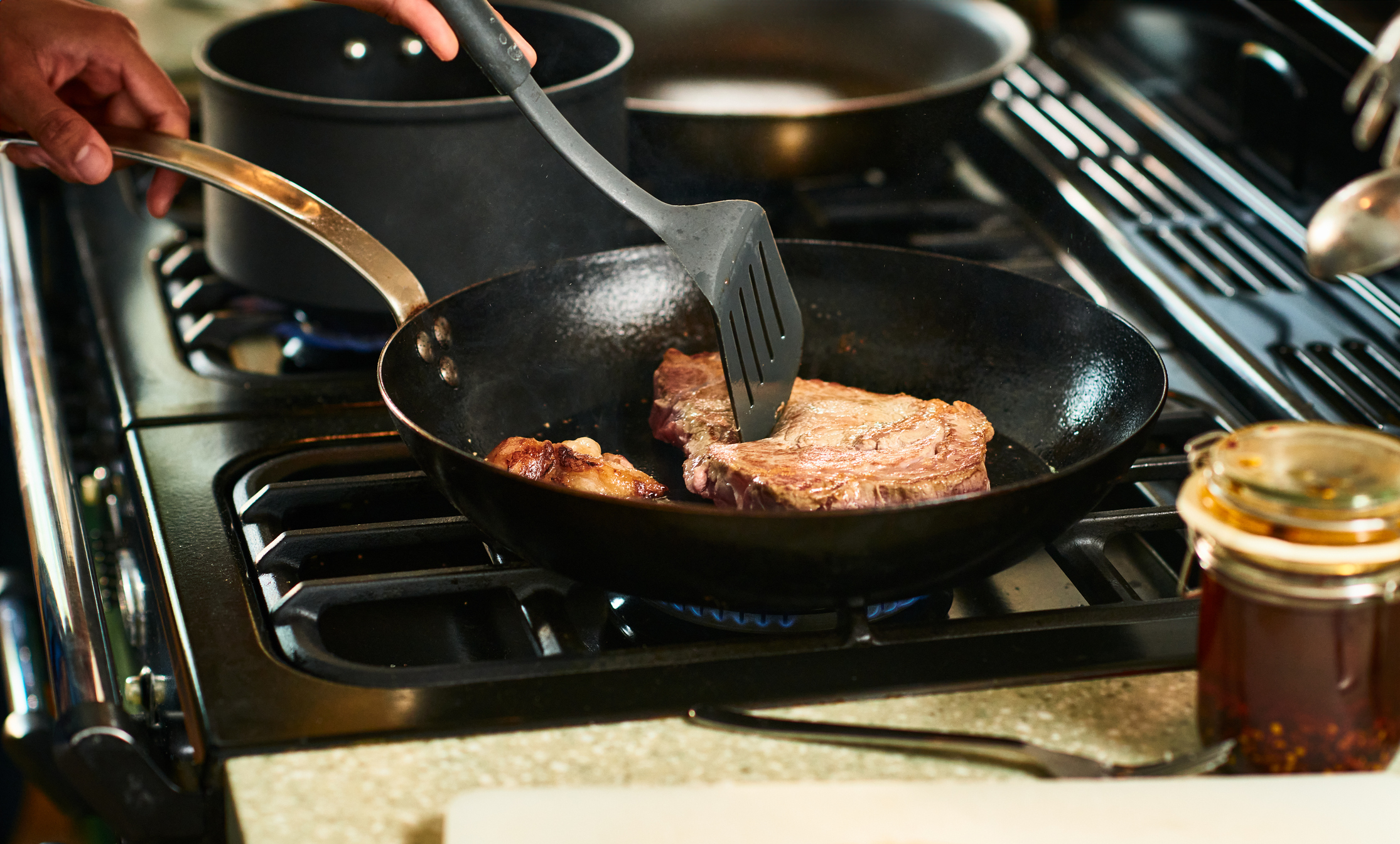

Want to know how to cook steak? Read our expert advice for preparing and cooking a steak, as well as tips on how to choose the best cuts - from sirloin, to rib eye, rump and fillet.
Regardless of the equipment you choose when cooking your steak, the most important step is bringing it to room temperature. Remove it from the fridge at least 20 minutes before cooking to allow it to come up to temperature. If the steak is too cold when it hits the pan it will stiffen and become tough.
Seasoning your steak is also essential. At a minimum we would suggest using a good quality sea salt, in the GoodtoKnow Test Kitchen we love Maldon Sea Salt Flakes and Cornish Sea Salt Co, as well as some freshly ground pepper. You can also experiment with your favourite herbs and spices or consider marinating your steak for a date-night dinner with a difference. Take a look at our jerk steak recipe or Teriyaki beef for some inspiration.
TOP TIP: A common mistake when cooking steak is putting your oil or butter in the pan. Instead, I recommend oiling up your meat. This reduces the amount of oil that can smoke and spit in the pan and it also helps prevent the steak from sticking.
I would recommend using olive oil for the initial cooking of your steak, it has a higher smoke point compared to butter so it won’t burn instantly in the piping hot pan. You could then baste the steak in melted butter towards the end of cooking, this will add flavour and a unique richness. Everything is better with butter! Use unsalted butter so that you’re in full control of the seasoning.
Heavy-based frying pans and cast iron pans are the best pan to cook your steak in. They are designed for even heat distribution, which will result in an evenly cooked steak.
Eddie McDonald, Development Chef at Donald Russell, agrees and explains: “The key is to cook with a heavy based pan, and heat it through well before you start cooking, because this is best for a good even heat distribution. It will cool down much less than a thin pan when the steak hits its it, and will give a better result.”
GoodtoKnow Newsletter
Parenting advice, hot topics, best buys and family finance tips delivered straight to your inbox.
Get the pan really hot (until nearly smoking) before placing your steak inside, you want to create an instantaneous seal and charring as soon as it hits the surface. It’s worth opening all the windows because it can get a little smoky!
How to cook steak in a pan
Ingredients
- 1 x 250g sirloin steak
- 1 tsp olive oil
- freshly ground pepper
Method
- Rub the steak with the oil and season with salt and freshly ground black pepper.
- Heat the pan or griddle pan to a high heat.
- Place the steak in the pan and fry for 2.5 minutes on each side for rare, or 3 minutes for medium and 3.5-4 minutes for well done. To calculate the timing of any sized, see Jessica's guide below.
- Take out and set aside to rest.
TOP TIPS: Don’t overcrowd the pan as this will reduce the temperature of the pan and will prevent you from getting a good sear.
Resting your steak is as important as how you cook it. I recommend resting the steak for as long as it is cooked. So if your steak is cooked for 10 minutes, rest it for at least ten minutes too.
You should cover the steak loosely in foil and leave it to rest on a warm plate. Do not wrap the steak in foil as it will trap moisture, undoing any crunch you’ve achieved and it could cause your steak to over-cook as too much heat will be trapped inside.
How long to cook steak on each side
The amount of time you cook your steak on each side depends hugely on how you like your steak served: rare, medium or well done. The weight, thickness and cut of your steak will also influence how long you should cook it. Scroll down for an explanation on the different cuts of steak.
Regardless of how you like your steak served, it’s important to cook your steak evenly on both sides. This will result in a good consistent colour and it will ensure the steak is cooked equally all the way through.
How to cook a medium-rare steak
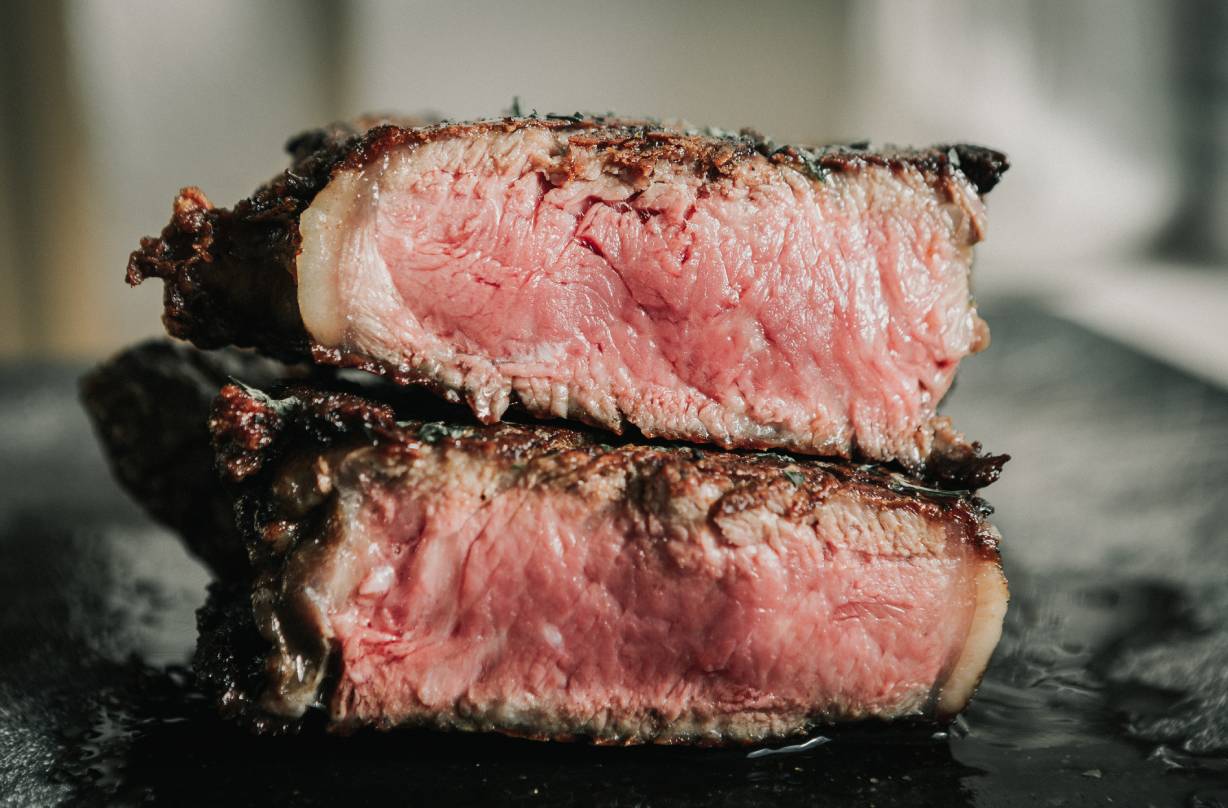
The thickness and cut of your steak you choose will alter how long it should be cooked for.
Lean cuts such as fillet can be served rare as they are already very tender but rib-eye benefits from a little longer to allow the fat to break down.
Here is a guide for the total cooking time of your steak based on weight:
Rare steak 10-12 minutes per 500g Medium steak 12-14 minutes per 500g Well done steak 14-16minutes per 500g
The above timings are total cooking time, so we recommend splitting it evenly between both sides of the steak.
For example, if you have a 250g steak and would like it cooked rare, cook it in a hot pan for 2.5 minutes on each side. If you’re cooking a larger steak or a cut designed for sharing, consider finishing it in the oven. Scroll down for instructions.
Invest in a digital meat thermometer such as Thermapen so that you can be confident your steak is cooked perfectly.
To probe your steak, insert it from the side and push until you reach the middle of the steak. Ideally you want to make sure your steak has an even thickness all the way through when it’s cut otherwise the cooking will be inconsistent.
Internal temperature when cooking is complete:
48-52C for rare 53-57C for medium rare 58-62C for medium 63-67C for medium well 68-72 for well done
Remember, the steak will continue to cook while it is resting. Never wrap the meat tightly in foil because you’ll cause it to sweat, losing the moisture you want to retain. Plus, this trapped moisture will undo and crispy bits that have formed – aka the tastiest bits!
After the meat has rested your would expect the internal temperature to increase by around 5C.
Eddie has another useful tip for cooking steaks that are cut thicker or thinner than usual. He explains: “When you’re cooking the first side, don’t turn it until tiny beads of moisture start to appear on the uncooked side. If you turn it at this point and brown the other side for a little less time, you’ll get a good medium-rare finish.”
How do I stop my steak sticking to the pan?
Eddie explains: “A common cause of steaks sticking is trying to turn them too early – they’ll almost certainly stick then. If you leave it until a good crust of caramelization has formed, you’ll find it will lift away from the pan with no problems.”
Make sure you rub it with plenty of oil before cooking too.
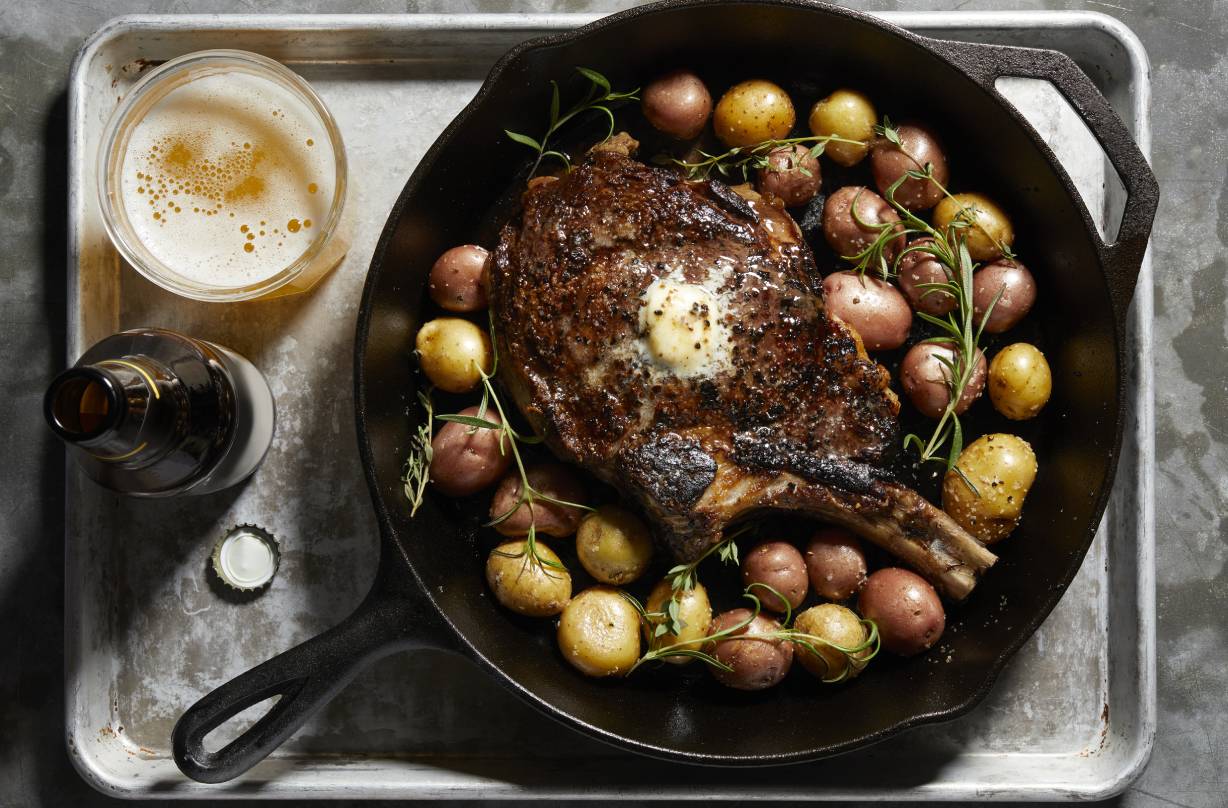
How long should you grill a steak?
If you would like to grill your steak make sure the grill is super hot before placing the meat underneath. A griddle pan on the hob is a better option if you’re trying to replicate a barbecued steak.
The same times and principles apply when cooking under a grill but it is more difficult to control as the heat distribution may not be even. Once again we would suggest using a meat thermometer so that you can accurately monitor the internal temperature of your steak.
How to cook steak in the oven?
Cooking steak in the oven is an excellent choice if you’re cooking a large steak or a cut that’s designed for sharing such as a T-bone.
It’s still best to sear the steak on both sides in a hot pan first as this helps intensify the flavours and char some of the fat.
Preheat your oven to 220C, fan 200C, gas 6. Sear the steak in a hot pan for a minute or two on each side and then use the timings mentioned above to calculate how long to finish your steak in the oven.
Another method you could consider is low temperature cooking. Eddie explains: “[It] can be used for just about every larger and naturally tender cut of beef, lamb and pork, and especially roasts.
It involves searing the outside of the meat at a high temperature, then roasting in a very low oven for a lengthy period. With this method, the meat becomes so succulent and tender, and guarantees a beautiful even pink colour all the way through, making perfection easier to achieve when cooking steak.”
What is the best cut of steak?
Everyone has an opinion on the best cut of steak but the answer usually boils down to two factors: personal choice and cost.
When it comes to the most economical cuts of steak, Eddie explains: “If you want real value for money, look outside the most well-known cuts. Fillet, sirloin and ribeye will always be quite pricey, but other cuts like Chuck Eye, Onglet or Picanha can give serious flavour at a more manageable cost.”
Donald Russell sell a ‘Speciality Steaks’ range online which is a great way of trying different cuts of steak and finding your favourite!
What is sirloin steak?
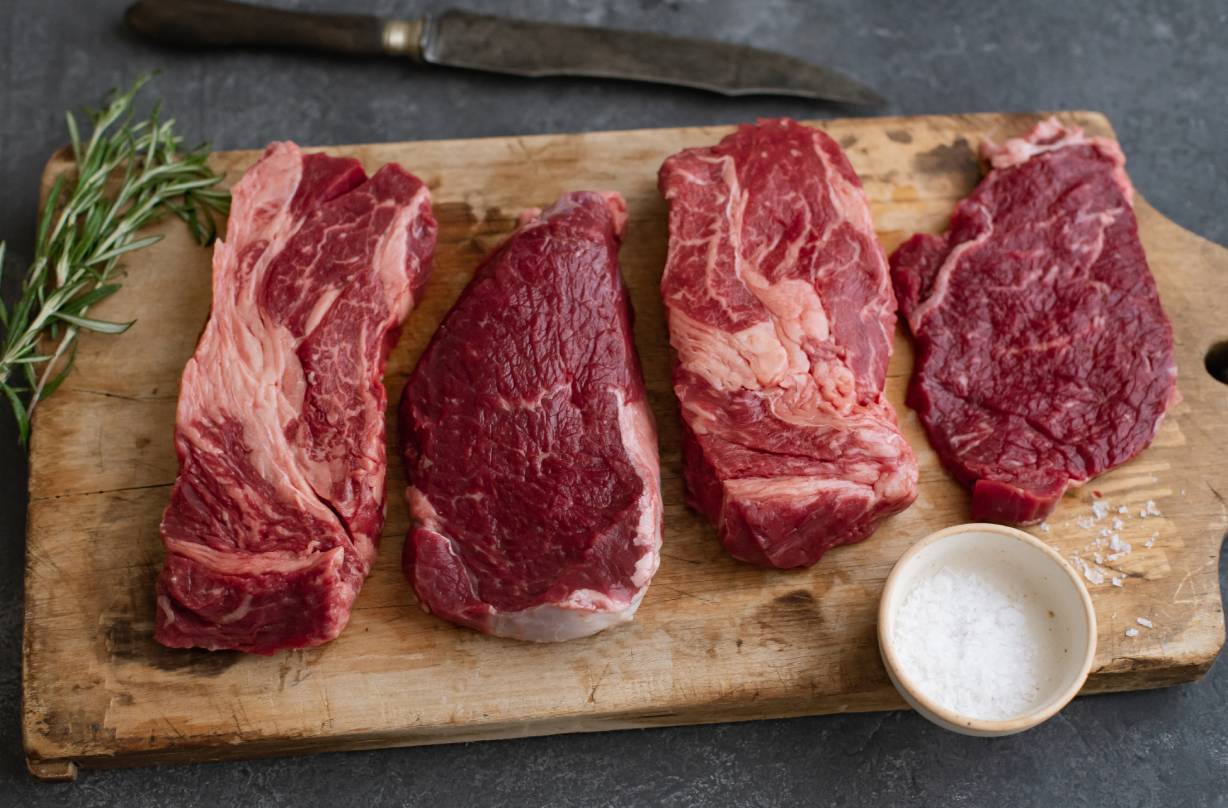
Sirloin is one of the most popular cuts of steak in the UK. It sits in between the cow’s fillet and rib and has a good balance between fat distribution and tenderness.
What is fillet steak?
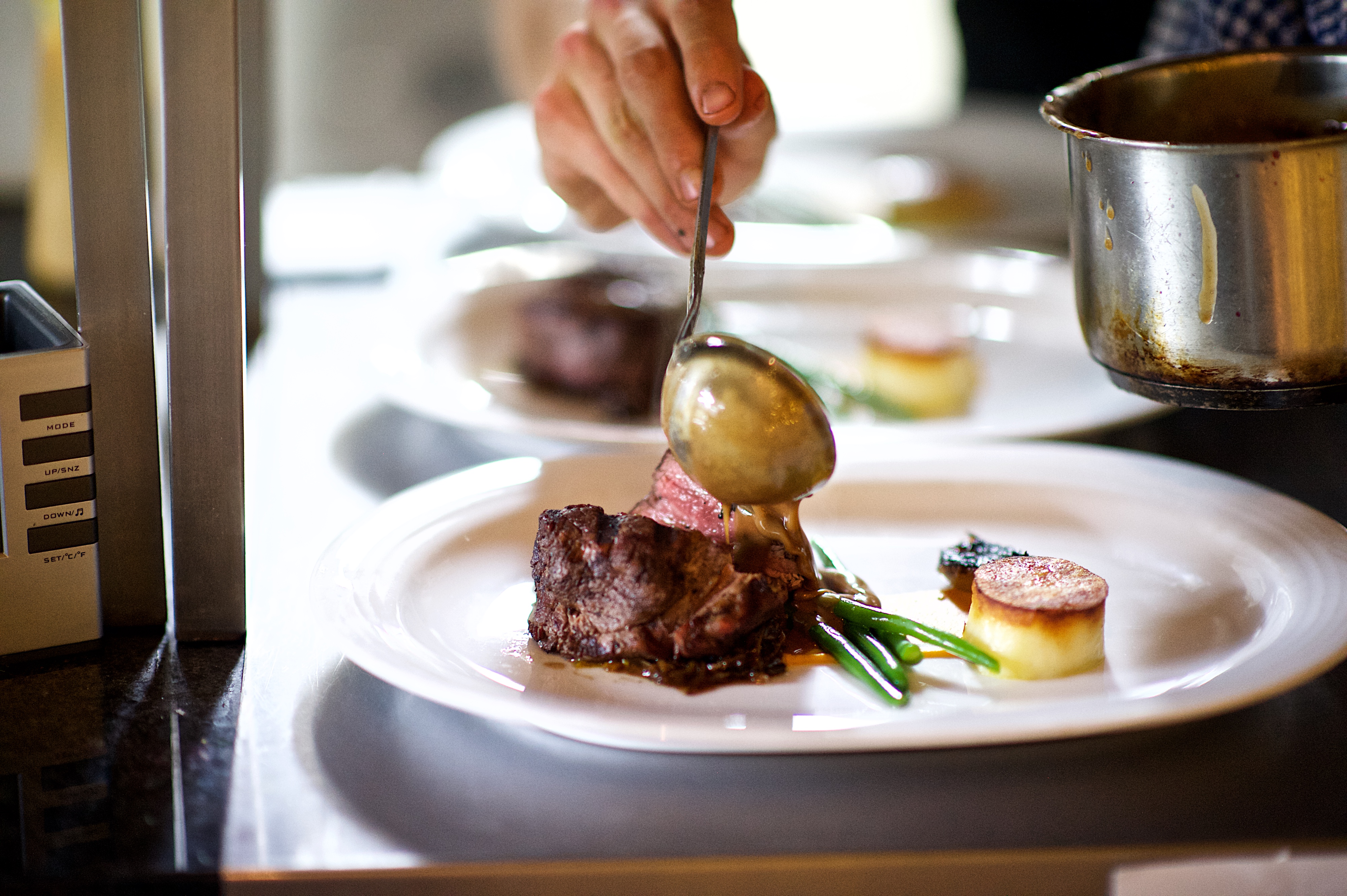
Beef fillet, or tenderloin, is one of the most expensive cuts of steak. It is incredibly lean and requires very little cooking time. What you gain in tenderness you lose in flavour as there is very little fat and hence it is definitely not as flavoursome as its rivals.
What is a rib-eye steak?
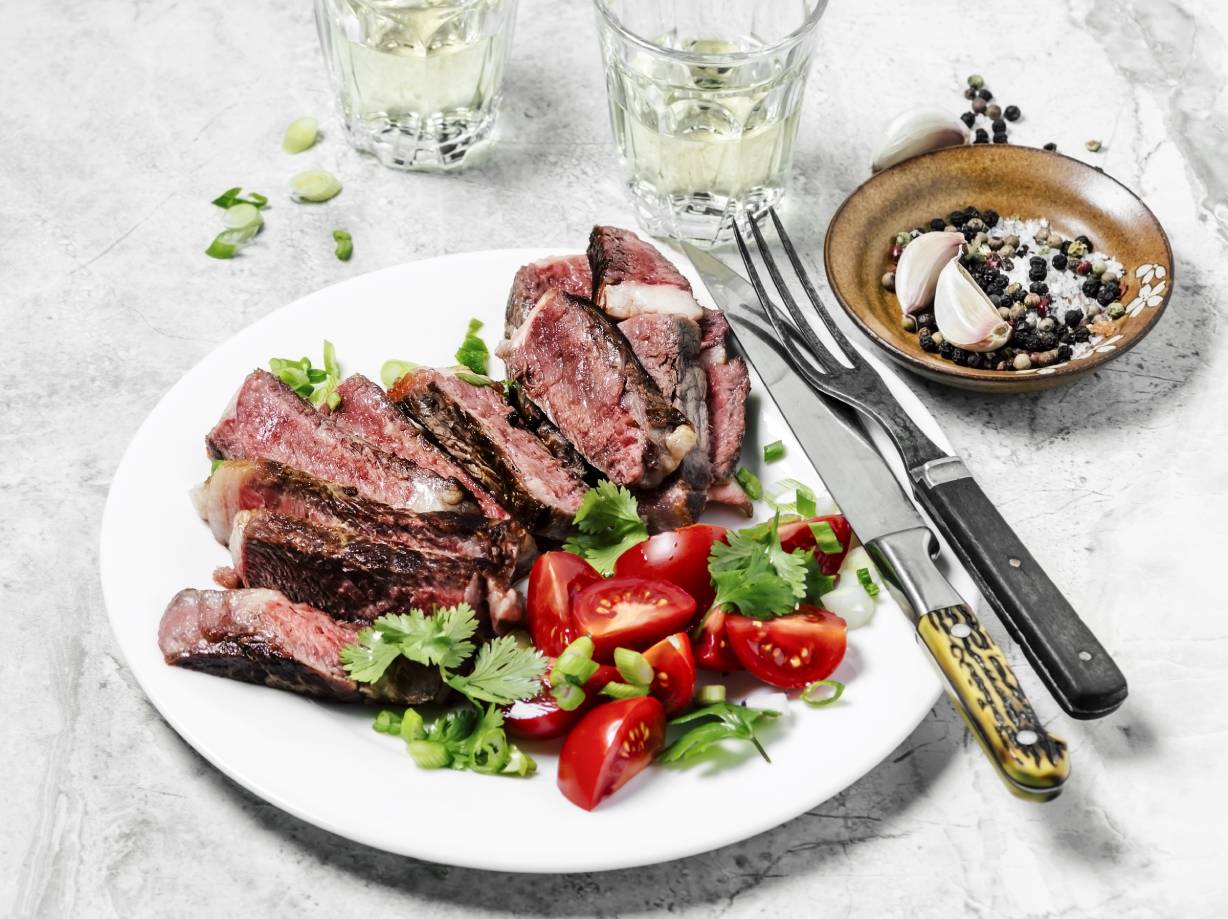
Rib-eye steak is cut from just above the cow’s ribs. This part of the cow does very little work so it is incredibly tender but has a little more fat compared to a fillet steak.
What is rump steak?
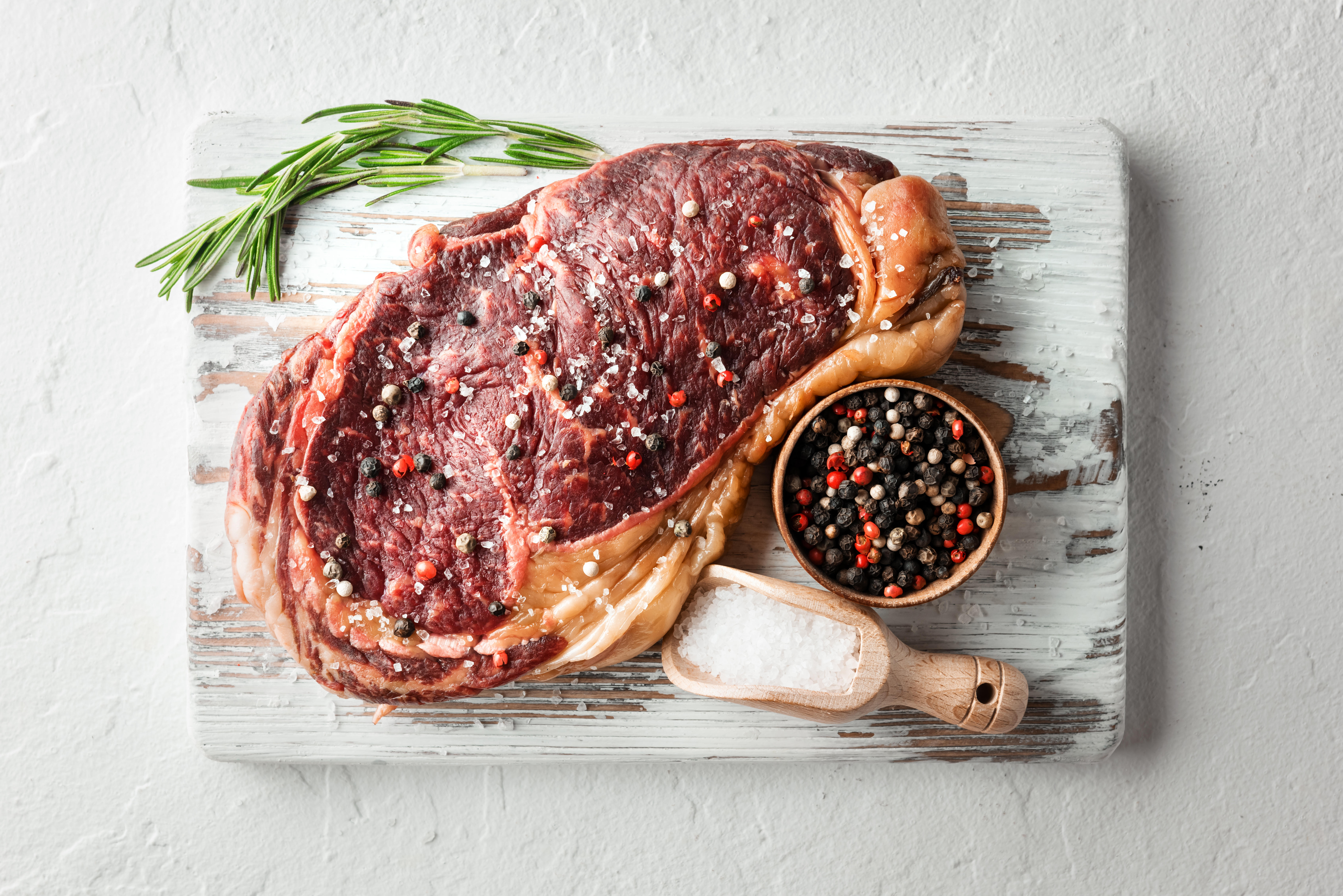
As the name suggests, rump steak comes from the backend of a cow. Compared to fillet or rib-eye this part of the cow does a lot of work and is therefore not as tender as the more premium cuts but it does have a lot of flavour.
What is an onglet steak?
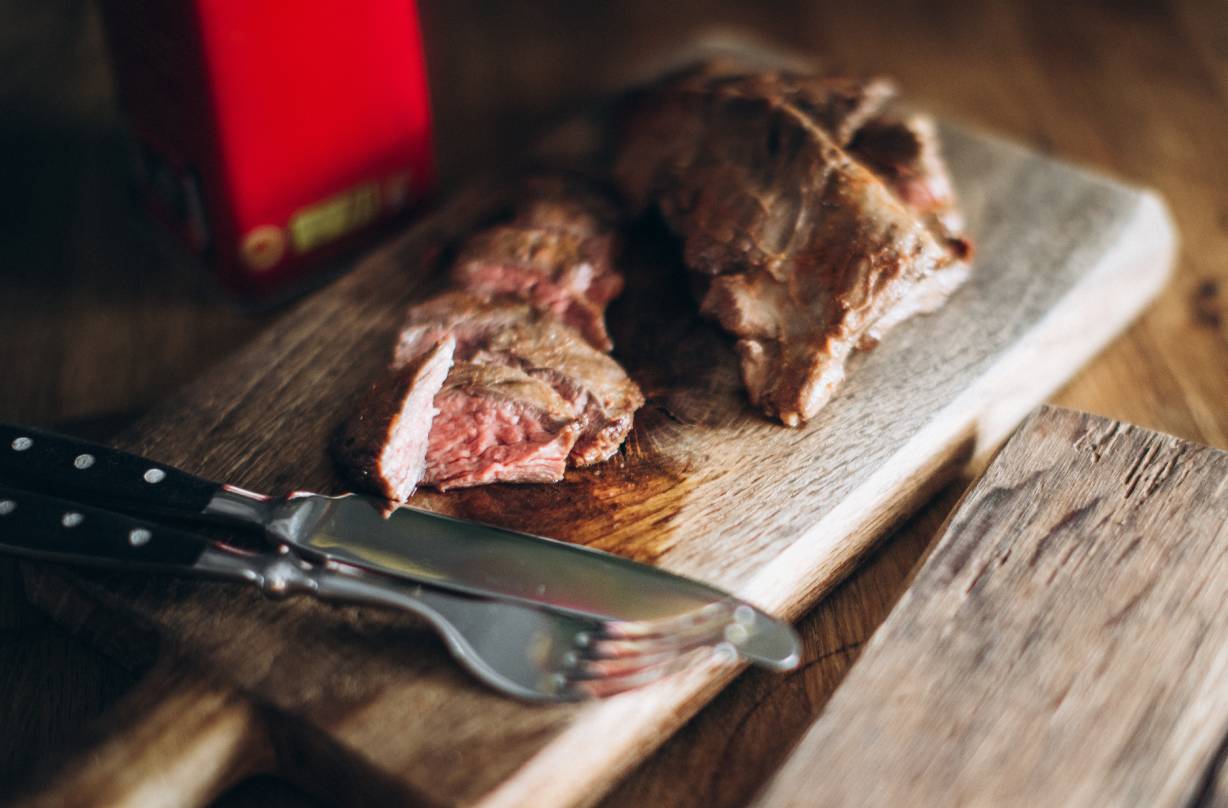
Onglet steaks can also be referred to as hanger steaks. This cut comes from the lower belly of a cow. It is best served rare as it can become tough the longer it is cooked.
What is skirt steak?
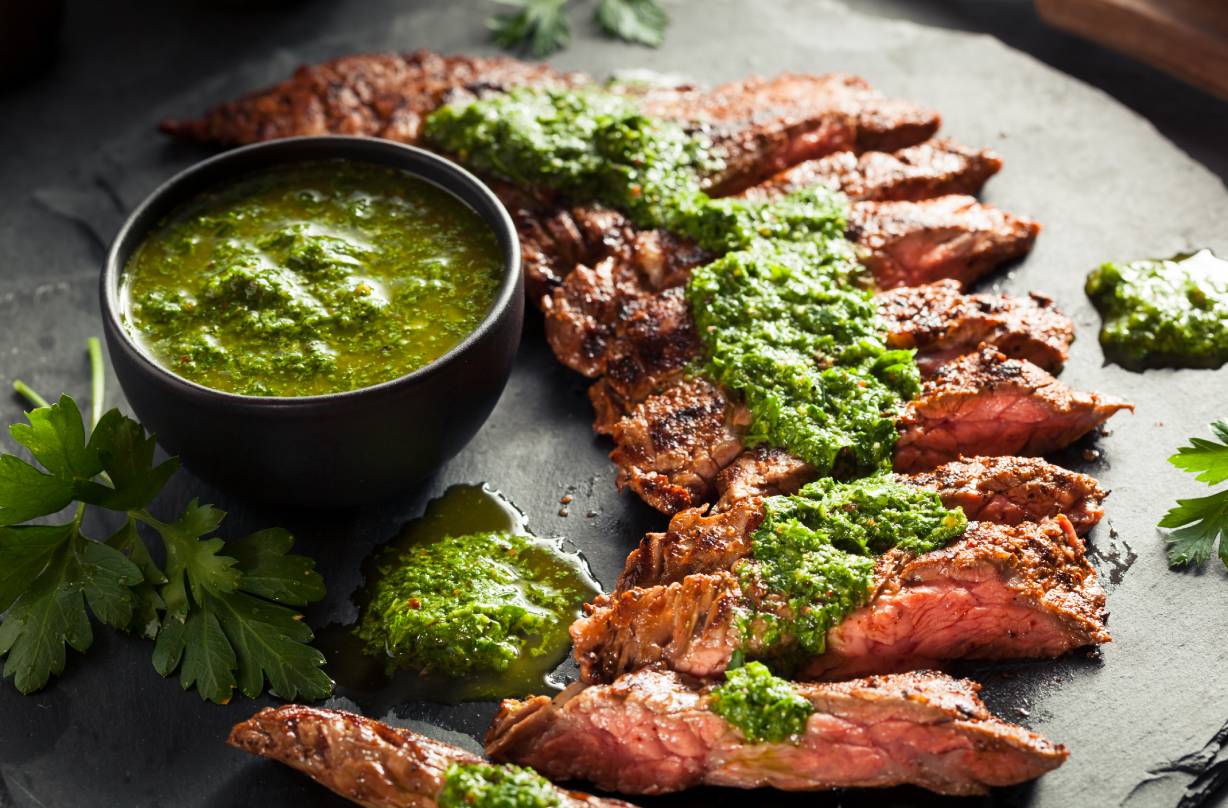
Skirt is found near the onglet by the lower belly and ribs of the cow. It has lots of fat and flavour but it can be quite tough as it is a frequently used muscle. Skirt steaks are usually cut very thin and should be flash fried or slow cooked.
What is a flat iron steak?
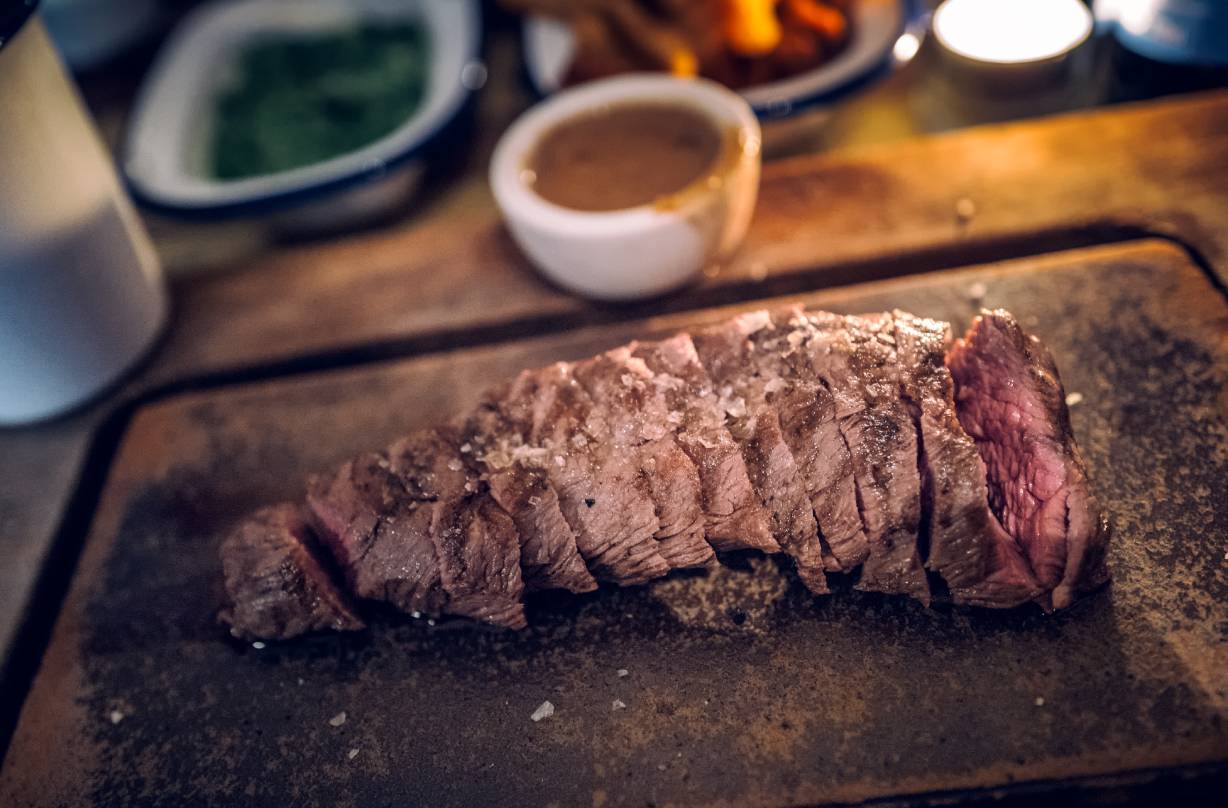
Flat iron can also be called the top blade steak, feather or chuck steak. It has lots of flavour as there is a lot of marbled fat but it is best cooked quickly and served rare to medium.
What is bavette steak?
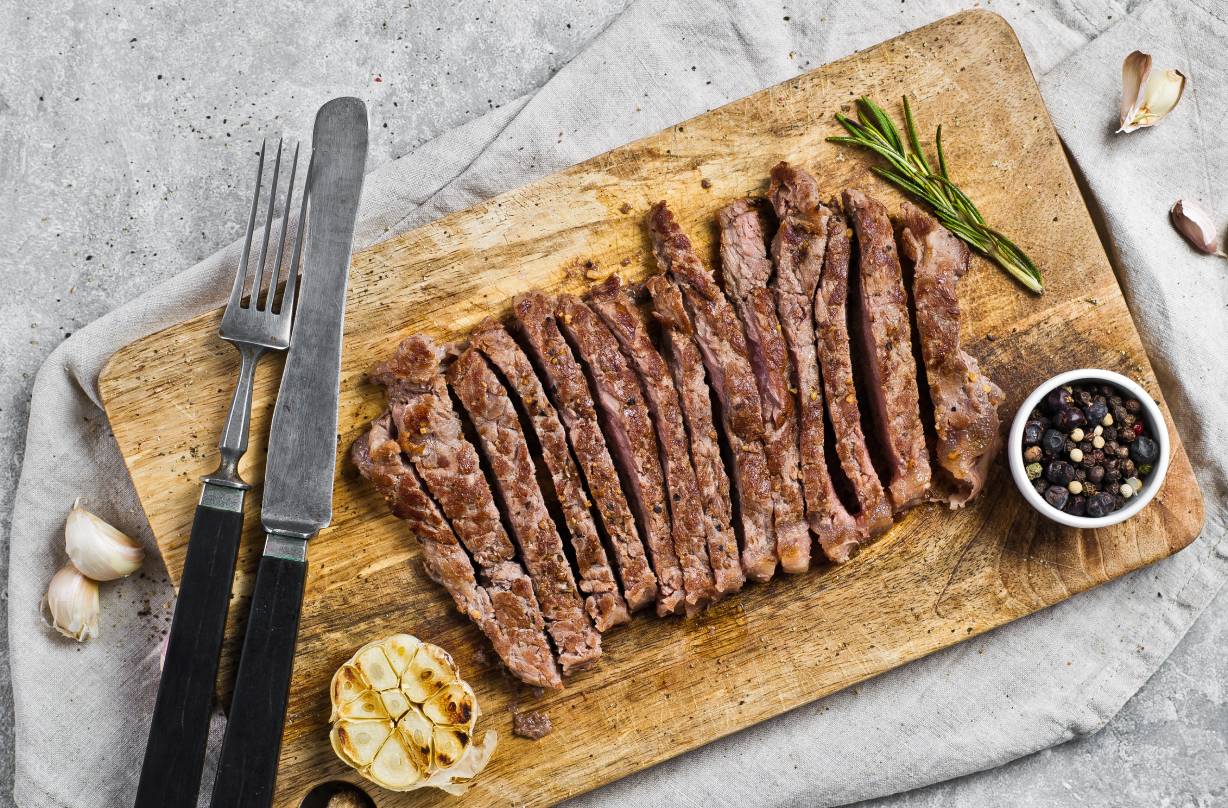
Bavette comes from below the sirloin and rump in the thin flank section of a cow. IT is often trimmed of fat and connective tissue and is ideal served rare to medium. It’s the perfect cut for quick cooking on the barbecue.
What is a chateaubriand steak?
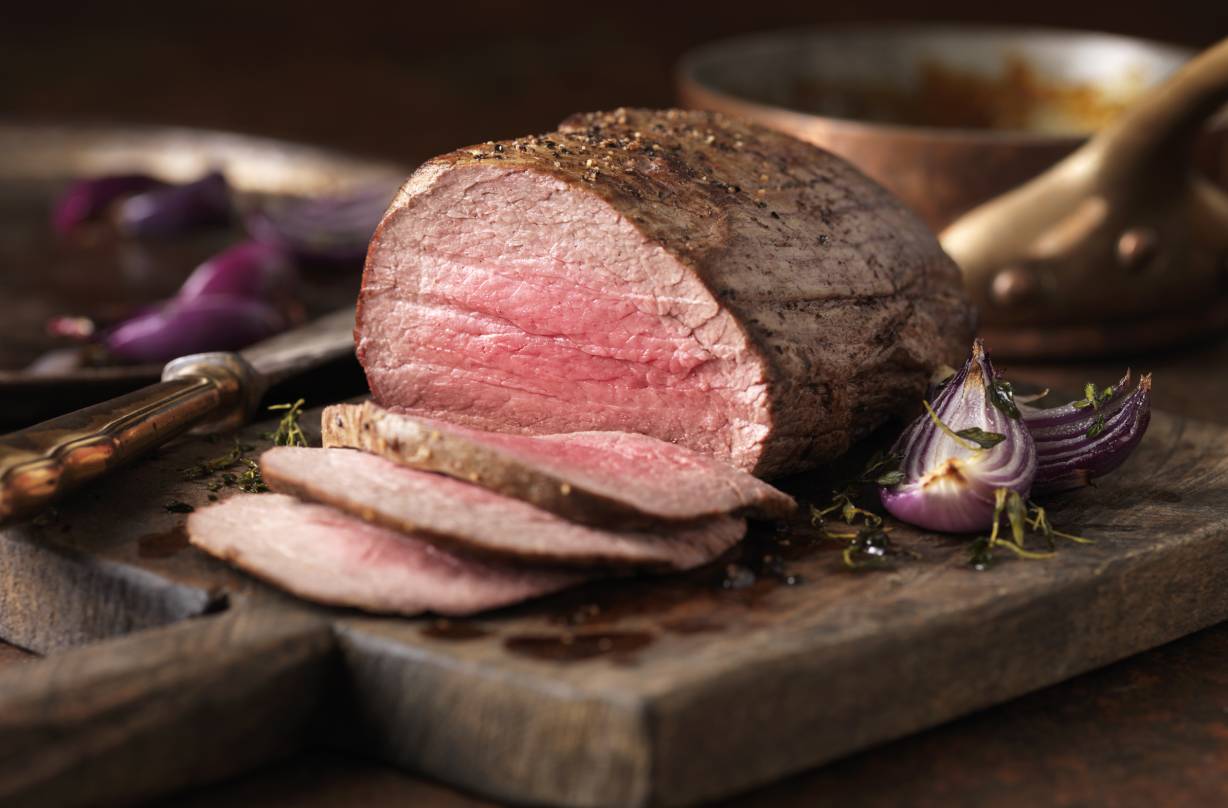
Chateaubriand is the thicker part of a beef fillet and is often served as a dish designed for sharing between two or three people. It’s more of a serving style than an cut of steak in its own right.
What is a T-bone steak?
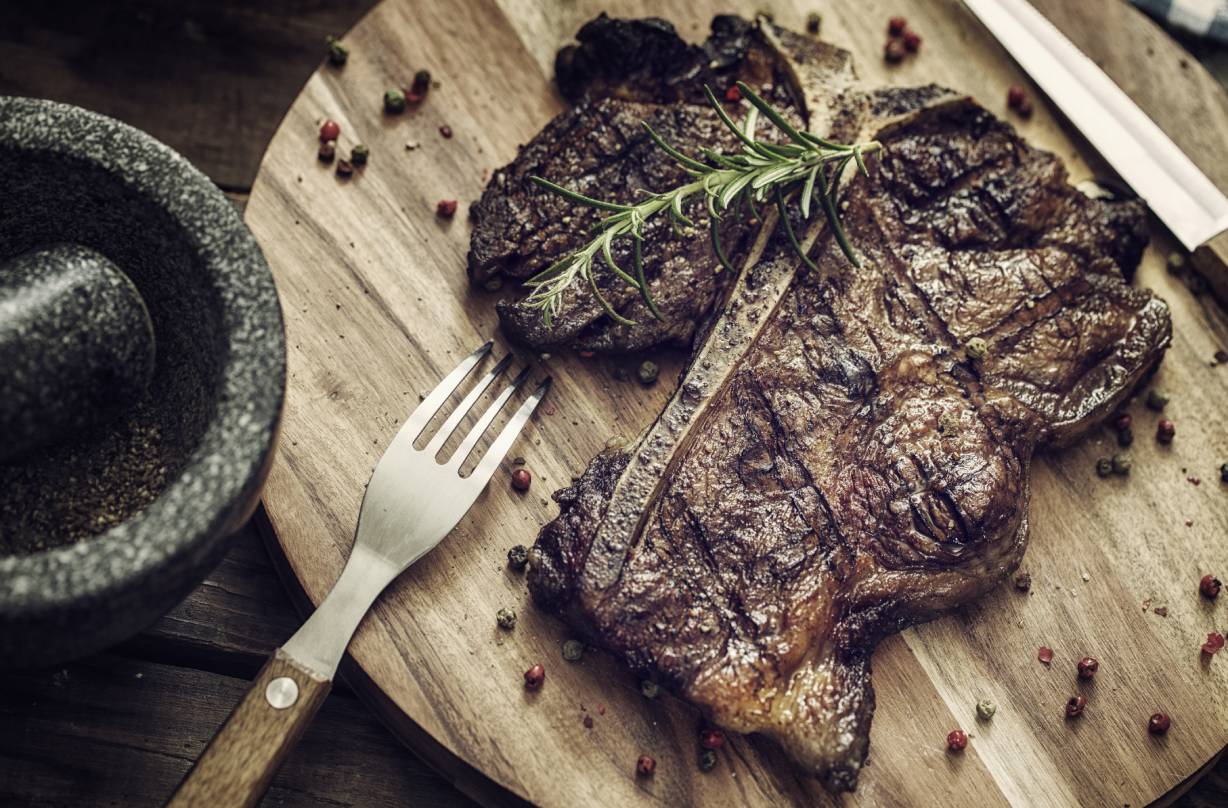
The T-bone is a cut of steak that includes sirloin and fillet. It’s cooked on the bone, which adds lots of flavour to the leaner fillet. As the fillet is thicker than the sirloin it will likely be a little more rare but it’s perfectly suited to this.
What is a porterhouse steak?
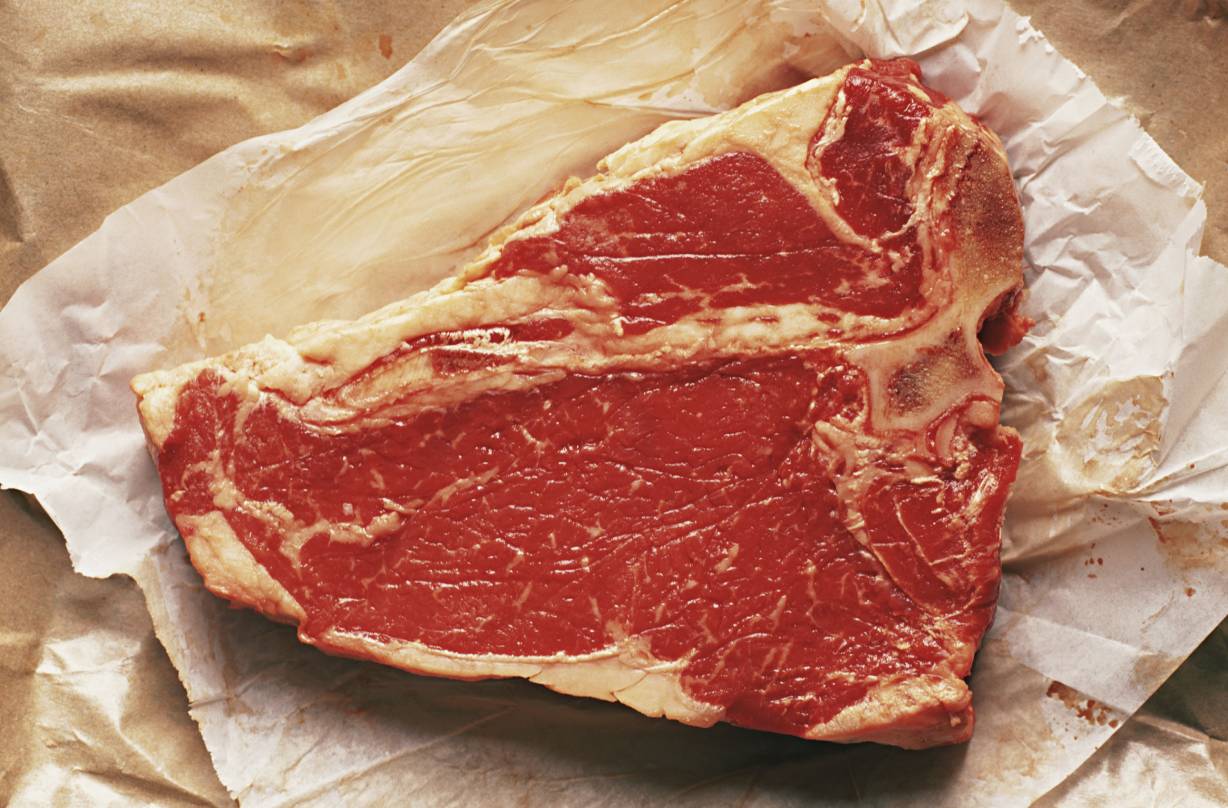
A porterhouse steak is the same as a T-bone but it’s cut from the larger section of the cow towards the rear. It has a larger portion of fillet compared to T-bone.
What is a Tomahawk steak?
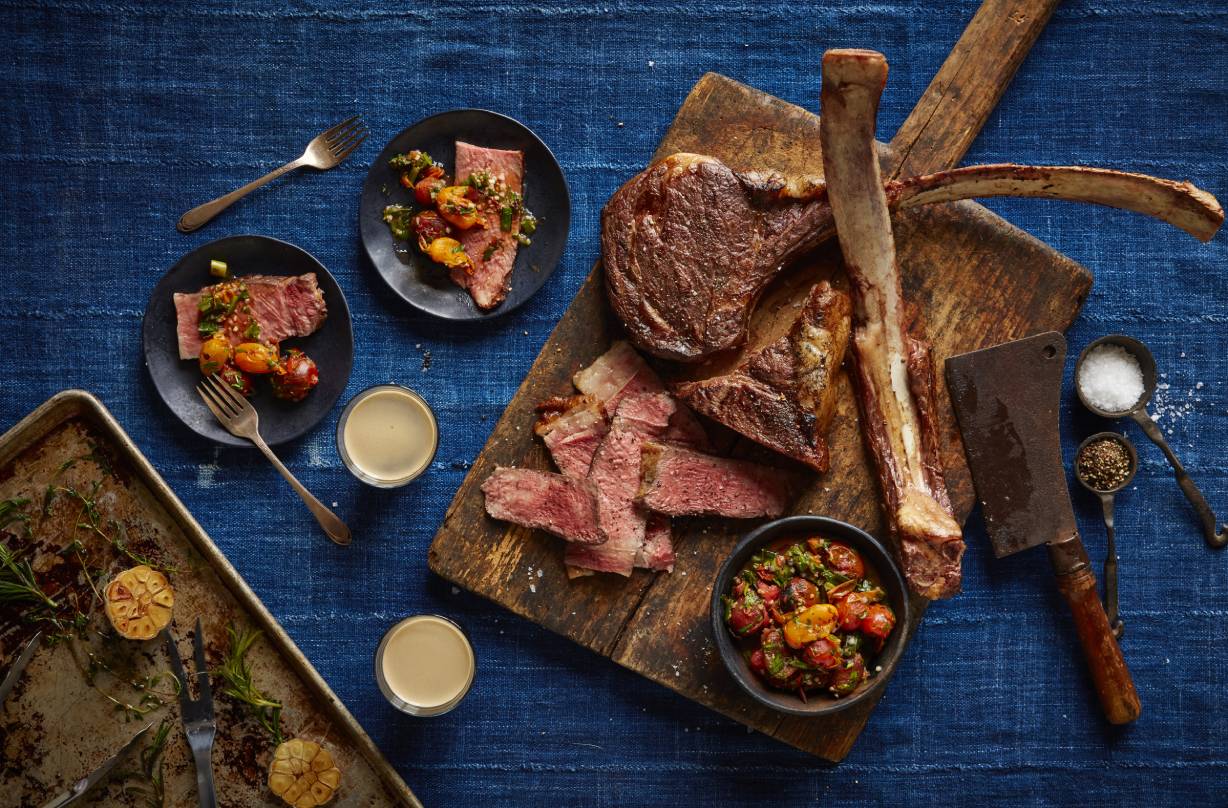
Tomahawk steak is a fancy name for a rib-eye steak that still has the bone in. It’s cut from the fore-rib of a cow and has the full bone left on which makes for an impressive centrepiece.
Are dry aged steak better?
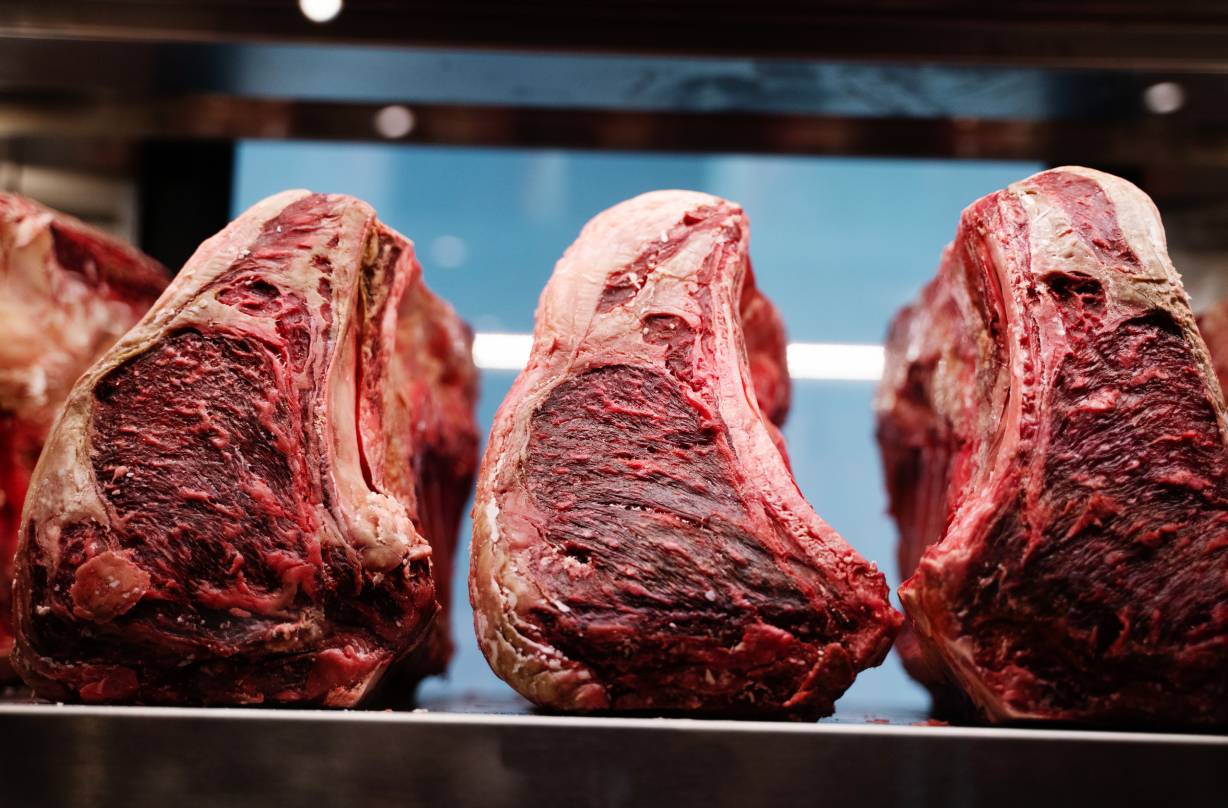
You might have read 30-day aged on the label of your supermarket steak or seen even older steaks on restaurant menus, but what difference does it make and is it worth the extra cost?
Dry-ageing reduces the amount of moisture on the surface of the meat and increases the flavour. The meat is hung in carefully controlled conditions to ensure that the meat doesn’t go bad.
Removing moisture means the flavours intensify but the meat also shrinks. Meat that has been dry-aged is usually more tender as natural enzymes and microbes begin to ‘breakdown’ the meat.
Chef Calum Franklin from the Holborn Dining Room recently explained the importance of dry-ageing in an Instagram Live video for Sunday Roasts but the same applies for steak.
Calum revealed that dry-ageing meat speeds up the process of caramelisation when the meat hits a hot pan.
He explained that the natural sugars caramelise faster, which is how you get the gorgeous deep brown colour.
Calum also adds that dry-ageing makes the meat more tender and adds a ‘funky beef’ flavour we all know and love.
Celebrity tips for cooking steak
Gordon’s Ramsey's first choice of steak is a rib-eye. He recommends cooking with the fat on as it adds flavour but removing before serving for easier eating.
Flat iron, also known as feather steak, is a top choice for Jamie Oliver - the cut of steak has a good distribution of fat and therefore has buckets of flavour. He recommends asking your butcher to remove any thick bits of connective tissue and sinew as it makes for unpleasant eating.
On his website, Raymond Blanc explains: “My mother has cooked this easy steak recipe since I was a child and I genuinely think it’s the best steak in the world. It relies on one very simple process: pan frying meat to create delicious juices which can then be turned into an emulsion by the addition of water.”
For this recipe he recommends using organic sirloin or rump steaks that are 2cm thick and have had the fat trimmed.
Fernando Larroude is an Argentinian chef and master of the grill for the restaurant chain, Gaucho. In a 2013 interview with the Independent Fernando revealed that rib-eye is his favourite cut. He explained: “Fat is flavour, fat is love for me…The fat content, the marbling, is what gives flavour to the steak, from the fat melting as it cooks.”
What is your favourite cut of steak and why? How do you cook it? Do you have any steak related questions you’d like our team to answer? Send the Test Kitchen all your steak questions over on Instagram or drop one of the team an email.

Jessica is a freelance food writer, stylist and recipe tester. She previously worked as Senior Food Writer at Future. While at Future Jessica wrote food and drink-related news stories and features, curated product pages, reviewed equipment, and developed recipes that she then styled on food shoots. She is an enthusiastic, self-taught cook who adores eating out and sharing great food and drink with friends and family. She has completed the Level 1 Associate course at the Academy of Cheese and is continually building on her knowledge of beers, wines, and spirits.